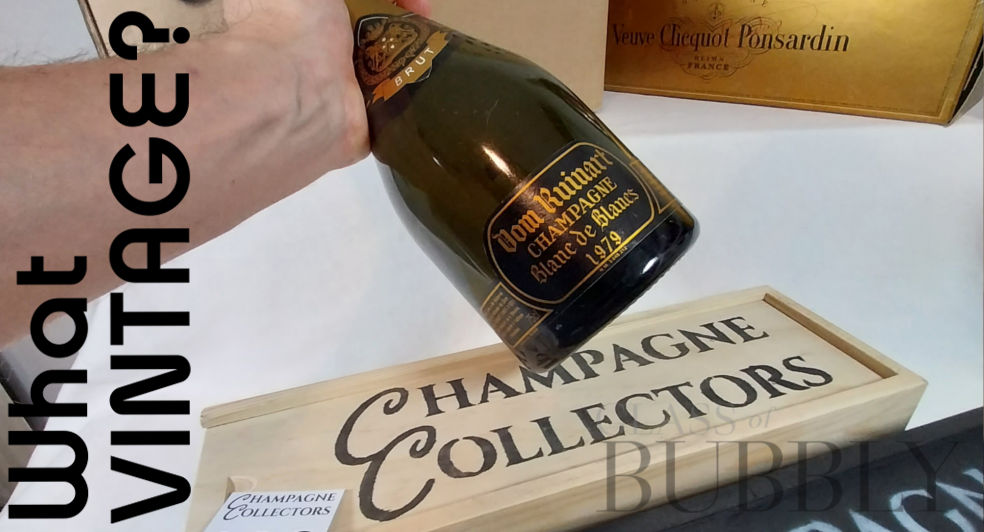Vintage Champagne
24th May 2017

Vintage – an ordinary word which can somehow lift the spirits or confound and confuse. When used in terms of fashion it can quite throw me. I get it that a handbag my grandma might have used can be described as vintage, but surely not the pale green cotton flares I was wearing what seems like 20 minutes ago. What makes a car vintage? Most wine is from one year, but that’s not what anyone means when they talk about vintage wine. What exactly is a ‘vintage lifestyle’? With Champagne, there’s no ambiguity. Vintage Champagne is wine made from grapes grown in the same year.
Most Champagne we buy is NV – Non-Vintage, or to be more accurate and slightly more poetic, multi-vintage and it accounts for around 85% of Champagne purchases in the UK. It means that it’s a blend of several years rather than just one as most wine is, because reserve wines, wines that were made in previous years, have been added.
Around 20% of the wine made from any one year is kept back to become reserve wines. These help to add complexity and allow the winemaker to achieve the same style of wine that year as he did the previous year, the year before that and so on. It’s a clever way of maintaining a recognisable brand identity and at the same time sometimes having to deal with smaller harvests or disappointing weather conditions making for less than perfect grapes. This is a crucial part of the Chef de Cave’s role, a part of the job requiring great skill, memory and palate.
Of course, expertise is required too for making a Vintage Champagne. The wine is still a blend; of grape varieties, of different areas and terroirs, but not of different years. It is not necessarily produced every year by every Champagne house, but only when the grapes are deemed to be of sufficiently high quality.
You should expect to pay more for Vintage Champagne for several reasons. Firstly, high-quality grapes are used. Secondly, the time the wine spends in the cellar, sur lattes, is much longer than for NV. Legally, it must be three years but many producers believe that ageing for five years or so gives a more complete and complex wine.
So these wines, known as millésimés in French, are generally more expensive then NV but might they be some of the best value Champagnes in terms of quality versus price? They offer so much more in aroma and flavour – from wheat and brioche to cinnamon and gingerbread, from cherry and plums to mushrooms and nuts. They can match brilliantly with food from oysters and white fish to red meat and cheese. And, even though the producer would prefer you to drink it pretty quickly so that you buy another bottle, there is actually no need to rush. Unlike NV which really should be drunk relatively soon after purchase, say a year or two, Vintage Champagne will keep and improve.
Only about 2% of what we buy in the UK is Vintage Champagne and I admit it isn’t your everyday purchase, but the returns on pounds to pleasure should be well worth the extra spend. I’m not talking about special cuvées here, most of which are vintage and which, for most of us, constitute a truly special occasion purchase, but the wines which are the first step up from the usual Brut. Very often a pleasingly large step.
Great years: 1990, 1995 2002, 2008
Good years: 1996, 1998, 2004, 2006, 2009
A few Vintage Champagnes to try:
Moët & Chandon Grand Vintage 2006 or 2004
Lanson Gold Label 2002
Louis Roederer Brut Rosé 2010
Alfred Gratien Blanc de Blancs 2008
Written by Laura Clay
![]()
Glass of Bubbly
Executive editor of news content for the website Please enjoy the articles that we share - We hope you find our love for Champagne & Sparkling Wines both interesting and educational.
